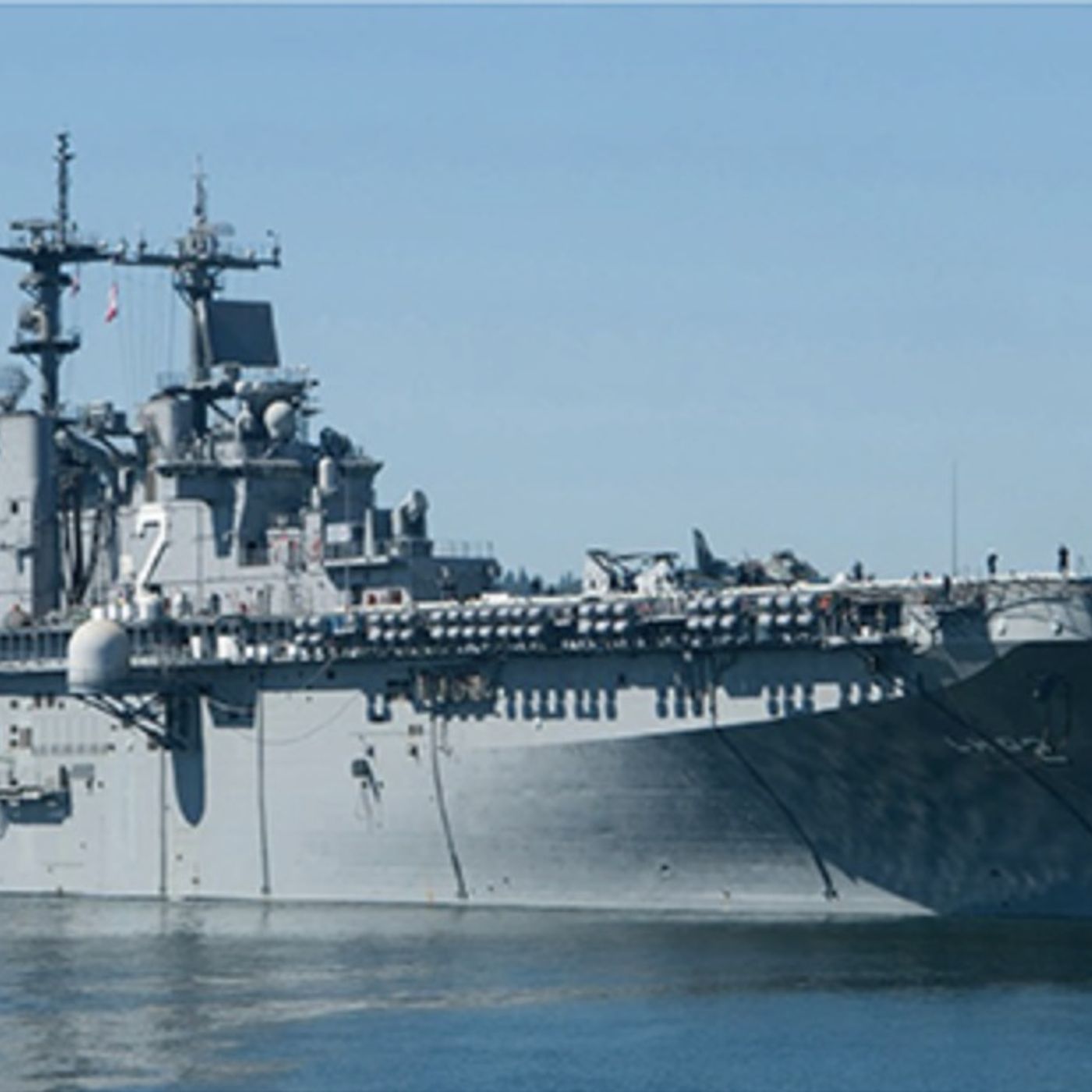Episode 712: Condition of the Navy's Amphibious Fleet And Its Impacts on Marines: the View from GAO
- Author
- Midrats
- Published
- Mon 27 Jan 2025
- Episode Link
- https://www.spreaker.com/episode/episode-712-condition-of-the-navy-s-amphibious-fleet-and-its-impacts-on-marines-the-view-from-gao--63921720
Does the US Navy have the right number and mix of amphibious ships, and are those ships being properly maintained?
The Government Accountability Office’s (GAO) recent report to Congress explored this topic in depth, and today’s Midrats Podcast will delve into it further.
From the summary of the report:
Amphibious warfare ships are critical for Marine Corps missions, but the Navy has struggled to ensure they are available for operations and training. In some cases, ships in the amphibious fleet have not been available for years at a time. The Navy and Marine Corps are working to agree on a ship availability goal but have yet to complete a metrics-based analysis to support such a goal. Until the Navy completes this analysis, it risks jeopardizing its ability to align amphibious ship schedules with the Marine Corps units that deploy on them.
As of March 2024, half of the amphibious fleet is in poor condition and these ships are not on track to meet their expected service lives.
Our guests for the full hour to discuss the report and its implications will be two joint directors for the project, Shelby S. Oakley, Director, Contracting and National Security Acquisitions, and Diana Maurer Director, Defense Capabilities and Management at GAO.
Showlinks
The conversation delves into the critical state of the U.S. Navy's amphibious fleet, focusing on the challenges of ship maintenance, the role of the Government Accountability Office (GAO) in assessing fleet readiness, and the ongoing controversy between the Navy and Marine Corps regarding ship availability. The discussion highlights the importance of metrics, accountability, and transparency in addressing these issues, as well as the need for a cultural shift within the Navy to prioritize maintenance and resource allocation effectively.
Takeaways
00:00: Introduction and Context of the Discussion
02:03: Understanding the GAO's Role in National Security
09:35: Insights from the Fleet: Realities of Ship Maintenance
14:49: Defining Ship Availability and Readiness
18:15: The Need for Metrics and Accountability
22:22: Challenges in Navy Bureaucracy and Culture
30:04: Navigating Accountability in Navy Maintenance
33:02: The Consequences of Deferred Maintenance
36:53: Policy Challenges in Navy Maintenance
43:09: Budgeting for Maintenance vs. New Acquisitions
45:53: Cultural Attitudes Towards Manpower and Maintenance
49:15: Realistic Expectations in Maintenance Planning
54:34: Future Directions for Navy Reports and Accountability
Full Guest Bios
Ms. Oakley is a Director in the Government Accountability Office’s (GAO) Contracting and National Security...
The Government Accountability Office’s (GAO) recent report to Congress explored this topic in depth, and today’s Midrats Podcast will delve into it further.
From the summary of the report:
Amphibious warfare ships are critical for Marine Corps missions, but the Navy has struggled to ensure they are available for operations and training. In some cases, ships in the amphibious fleet have not been available for years at a time. The Navy and Marine Corps are working to agree on a ship availability goal but have yet to complete a metrics-based analysis to support such a goal. Until the Navy completes this analysis, it risks jeopardizing its ability to align amphibious ship schedules with the Marine Corps units that deploy on them.
As of March 2024, half of the amphibious fleet is in poor condition and these ships are not on track to meet their expected service lives.
Our guests for the full hour to discuss the report and its implications will be two joint directors for the project, Shelby S. Oakley, Director, Contracting and National Security Acquisitions, and Diana Maurer Director, Defense Capabilities and Management at GAO.
Showlinks
- GAO Report: AMPHIBIOUS WARFARE FLEET Navy Needs to Complete Key Efforts to Better Ensure Ships Are Available for Marines
- GAO Report: Navy Readiness: Actions Needed to Improve Support for Sailor-Led Maintenance
The conversation delves into the critical state of the U.S. Navy's amphibious fleet, focusing on the challenges of ship maintenance, the role of the Government Accountability Office (GAO) in assessing fleet readiness, and the ongoing controversy between the Navy and Marine Corps regarding ship availability. The discussion highlights the importance of metrics, accountability, and transparency in addressing these issues, as well as the need for a cultural shift within the Navy to prioritize maintenance and resource allocation effectively.
Takeaways
- Metrics and definitions of ship readiness need to be standardized.
- Cultural and bureaucratic challenges hinder effective maintenance practices.
- Accountability is essential for improving the Navy's operational readiness.
- Budgeting for maintenance is often deprioritized in favor of new acquisitions.
- Sailors are overworked and under-resourced, impacting their performance.
- The Navy must address root causes of maintenance issues to improve fleet readiness.
- Future leadership changes present an opportunity for reform in the Navy.
00:00: Introduction and Context of the Discussion
02:03: Understanding the GAO's Role in National Security
09:35: Insights from the Fleet: Realities of Ship Maintenance
14:49: Defining Ship Availability and Readiness
18:15: The Need for Metrics and Accountability
22:22: Challenges in Navy Bureaucracy and Culture
30:04: Navigating Accountability in Navy Maintenance
33:02: The Consequences of Deferred Maintenance
36:53: Policy Challenges in Navy Maintenance
43:09: Budgeting for Maintenance vs. New Acquisitions
45:53: Cultural Attitudes Towards Manpower and Maintenance
49:15: Realistic Expectations in Maintenance Planning
54:34: Future Directions for Navy Reports and Accountability
Full Guest Bios
Ms. Oakley is a Director in the Government Accountability Office’s (GAO) Contracting and National Security...
